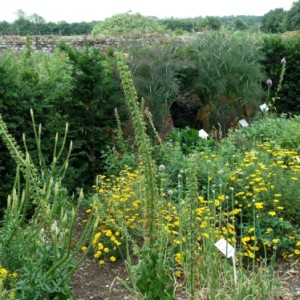Doorway to . . . ?
The places an English Heritage Card takes you to!!
We are usually looking for somewhere to stop off and take a break during the long journey from Cumbria to Kent and today we found something a bit different . . . Denny Abbey in Cambridgeshire.
This wonderful building, built originally around 1159 to house a small group of Benedictine monks from Ely, has seen many changes and been used for very different purposes over the centuries. What the Ministry of Works did, when they took it over in 1947, was to carry out archaeological work, which uncovered evidence of the building’s history and now it is a fascinating jumble of different building styles and phases.
So the doorway - in 1170 the Knights Templar took over the building for a sort of retirement home or hospital. It was they who built the ornate church door in my blip. The ‘zigzag’ pattern around the arch is now badly worn, but was once beautifully carved from limestone and shows what a high status building it was at the time. Later the doorway was blocked up and a much later extension covered the carving. Imagine the joy on finding this during archaeological work.
When the Countess of Pembroke acquired the building in 1327 she set up an abbey here for an order of nuns known as the 'Poor Clares'. She changed the building substantially, converting much of it to make a private residence for herself. After the dissolution of the monasteries in the 1530s, the building became a farmhouse, and it remained so until 1947 when it came into the care of the Ministry of Works, now English Heritage. There is evidence of all these phases to be seen as you walk round the building.
But to keep to the wildflower theme, the extra is of a Medieval Dye Garden – a delightful collection of plants used for dyes before synthetic dyes were invented. There is Woad, where blue dye could be extracted from the leaves, Madder, whose roots provided brown and red dyes, and many more. Having done some natural dyeing in the past, I was fascinated.
And there is a cottage, kept as it would have been in the 1940s/50s. So much we recognised . . . oh dear!


Comments
Sign in or get an account to comment.


